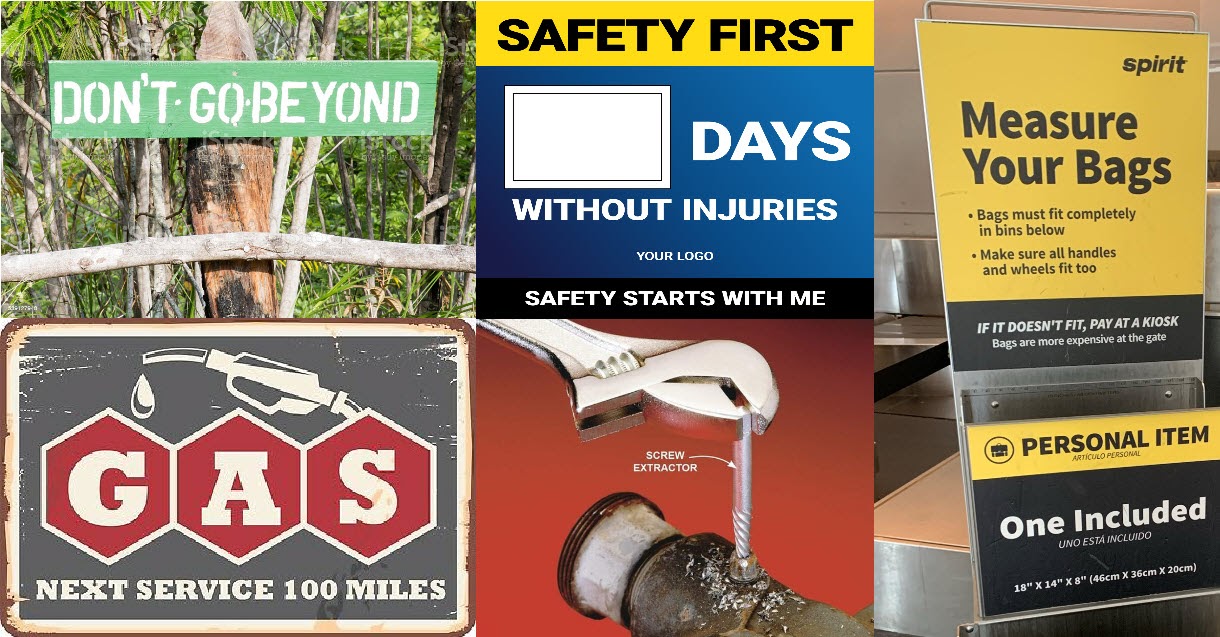Take a look at the featured image. Have you ever noticed these signs in airports or restrooms? Or perhaps even on posters, sales kits, and product guides? Without knowing it, we are already seeing a lot of Microlearning tools. But the thing is, we don’t bother to call them Microlearning. Why? Because they are easy, short, simple, straight to the point, fast, and useful.
Microlearning focuses on serving instant “slices” to learners, instead of the whole pie. Through this method, the “get-it-now,” “do-it-now” learners are able to respond to dynamic situations.
To give you more examples, click the links below.
However, creating Microlearning examples needs careful evaluation. A good Microlearning example must have all of the following key traits:
- Ubiquitous
- Easy
- Simple
- Short
- Useful
- Having a call-to-action
- Timely
| Now, let me share with you more insights on how these traits can transform into an effective Microlearning example. | |
| 1. |
Ubiquitous. It must appear so natural in our day-to-day life, that we hardly notice it. When Microlearning is truly successful, your workers and learners will not even call it Microlearning. They just grab it and use it. They are quick information that guides our behaviors – just like the RED, GREEN, YELLOW traffic lights. Another example is the big sign at the entrance of a company saying “TODAY is 250 Days Without An Accident.” |
| 2. |
Easy. Learners and workers glance at these signs and they instantly know why they need it, and what problems they are trying to solve. Ease of use is a standard need in Microlearning. If the answers are great, but hard to find and access, they lose value to the learner and worker. Don’t hide them inside your “login” and “hard to find” LMS’s or portals. Make them accessible. |
| 3. |
Simple – Microlearning means giving out quick steps,“show me’s”, and guides. I also call this the “one-glance guide.” For many designers and trainers, this is a tough one to do. Why? Because we have yet to distill parts of steps that are consequential. We keep adding to a long list, yet 90% have no consequences or benefits to the worker. |
| 4. |
Short – There’s no need for long narratives, Microlearning gives the answer or guide on one page. Most often when workers are in the workflow, they don’t want to flip pages. Imagine if they are holding a piece of equipment or talking to a customer; they can not be interrupted. Endeavor to do one-pagers. |
| 5. |
Useful – This is the ultimate test of good Microlearning. Does it help the worker find solutions and solve problems? When we develop content, we need to look at the answers from our point of view as designers or experts. We want to tell them the perfect answers. Though we have noble intentions, we get stuck with that view and miss the opportunity to focus on making the answers useful. This is where we need to keep on asking workers on short surveys (3-question surveys) to know what they need. Don’t develop content, if they don’t need it. |
| 6. |
Call to action – A good test if Microlearning works is if they call people to act. After all, this is the distance between answer and action. The essence of the Microlearning design is to shorten the distance between answer and action. Here, you will use slogans and action guides. Examples would be, “don’t tap the gas” – from COSTCO, “10 miles to next gas” – Freeways, and many others. |
| 7. |
Timely – This is related to all the above traits of Microlearning. When does an answer become timely? Often our answers are far from the time they are needed by workers. Imagine that you sent a text to a peer asking for help. And she/he responds instantaneously. The quick request for help is current; The response is swift and current. Artificial Intelligence and Machine Learning and Chatbots are trying to accomplish these quick answers. But even these technical solutions don’t come close to the “question now, answer now” effect. This is where keeping a close network of trusted peers and friends is viable. People are still one of the most reliable sources of much needed instant and right information. The key idea is Microlearning needs to be reliable. |
When you develop Microlearning, always take a look at the essential traits we’ve discussed. Challenge your design, and develop your technologies so your approach leads to the seven traits above. What matters are the answers and how they help workers and learners – now, fast, easy, lightweight, and instant.
References
Demos and Example
Equipment Flashcard
Camera PDF guide
Brainstorming Map
Stressful Situation
Insight Is the Smallest Form of Microlearning
Microlearning That Kicks Learners Into Thinking and Acting
Vignettes Learning Workshops
1. Microlearning for Disruptive Results
2. Developing Critical Thinking for Modern Learners
3. Instructional and Experience Design for Workflow Learning
4. The Masterful Virtual Trainer Online Workshop
5. Hyper Story-Based eLearning Design Workshop
6. Training Frontline Leaders as Learning Accelerators
7. HYBRID Remote and Hands-on Training
8. Advanced Skills in Webinars
Ray Jimenez, PhD
Vignettes Learning
“Helping Learners Learn Their Way”

